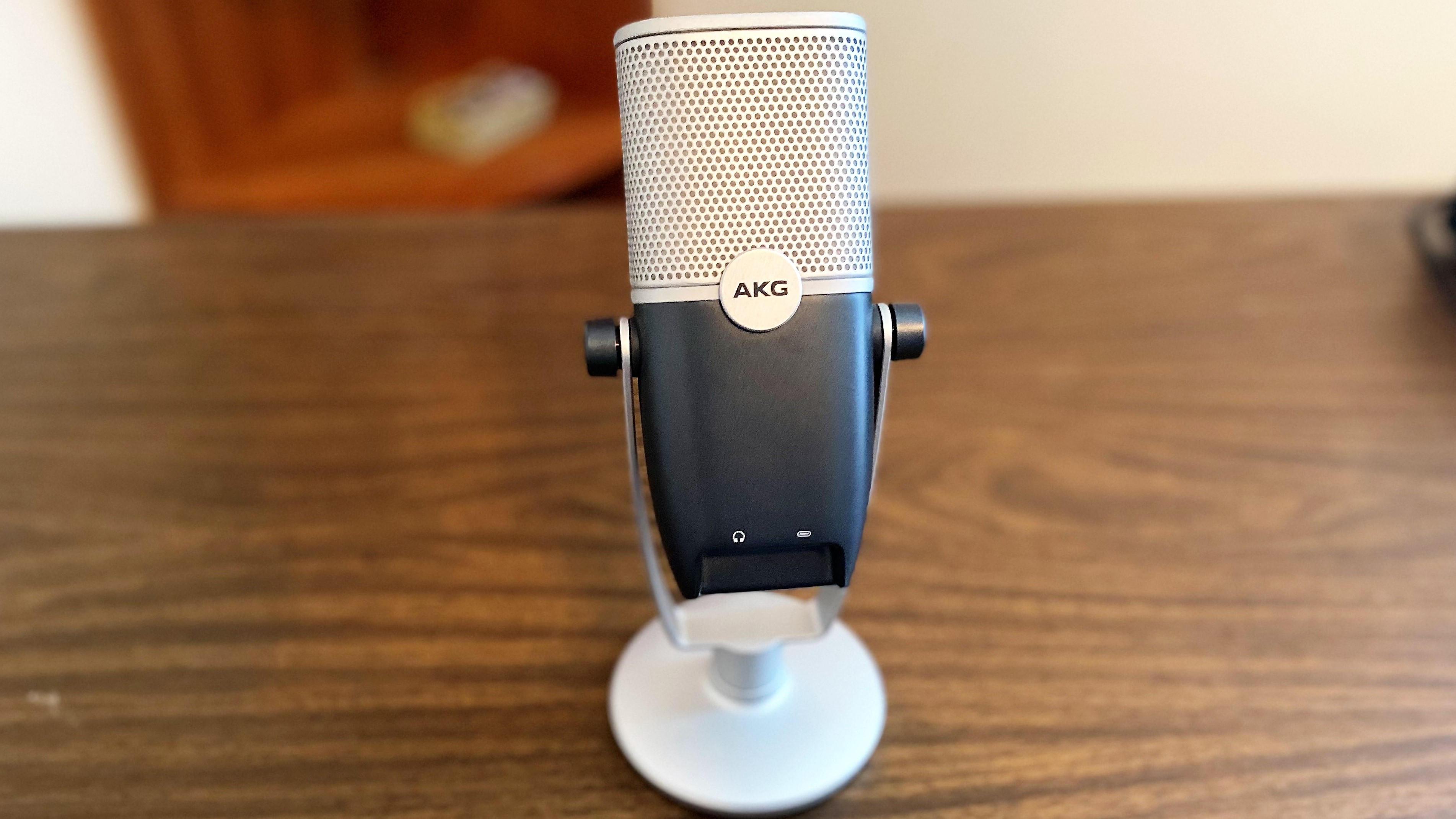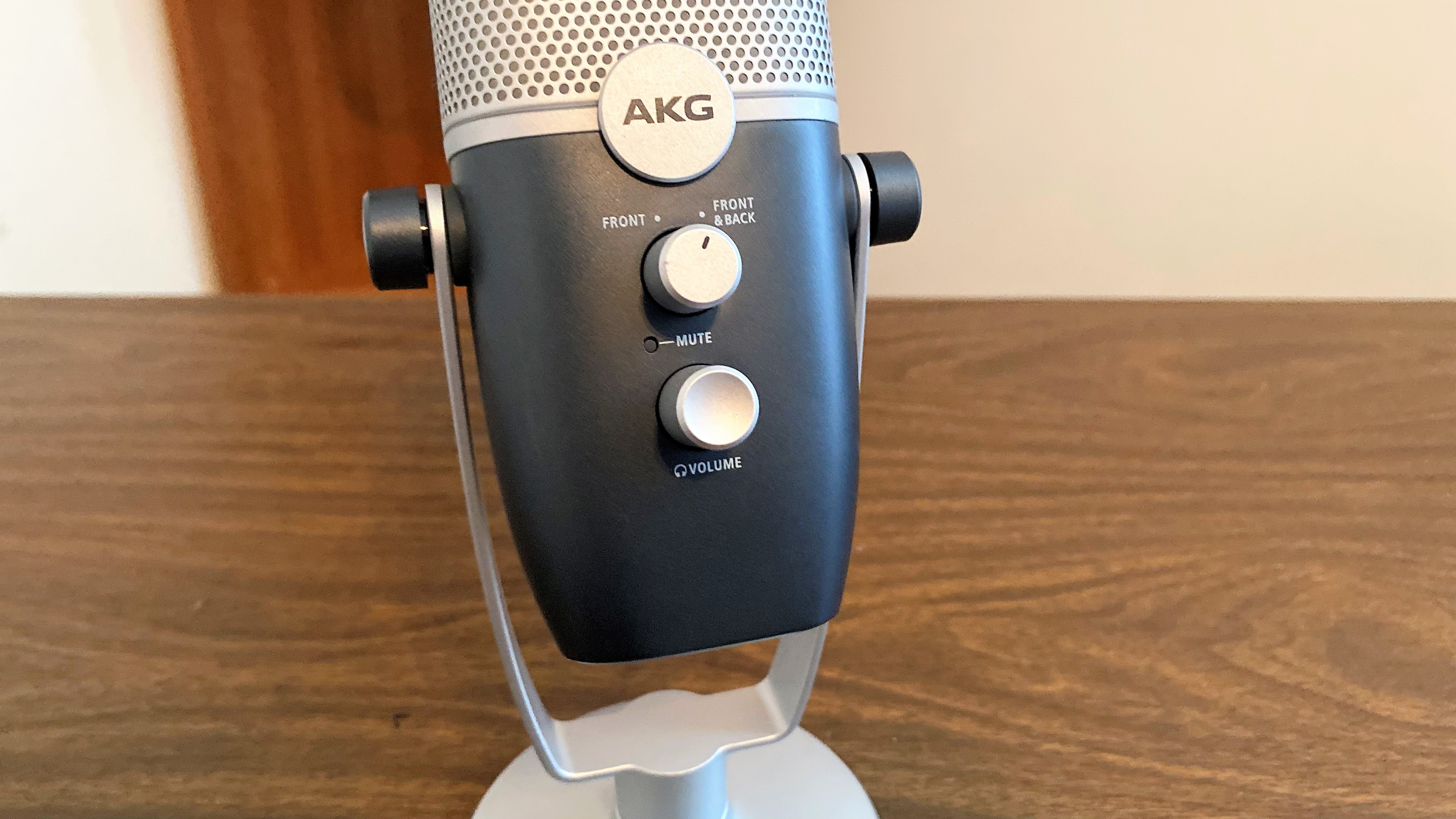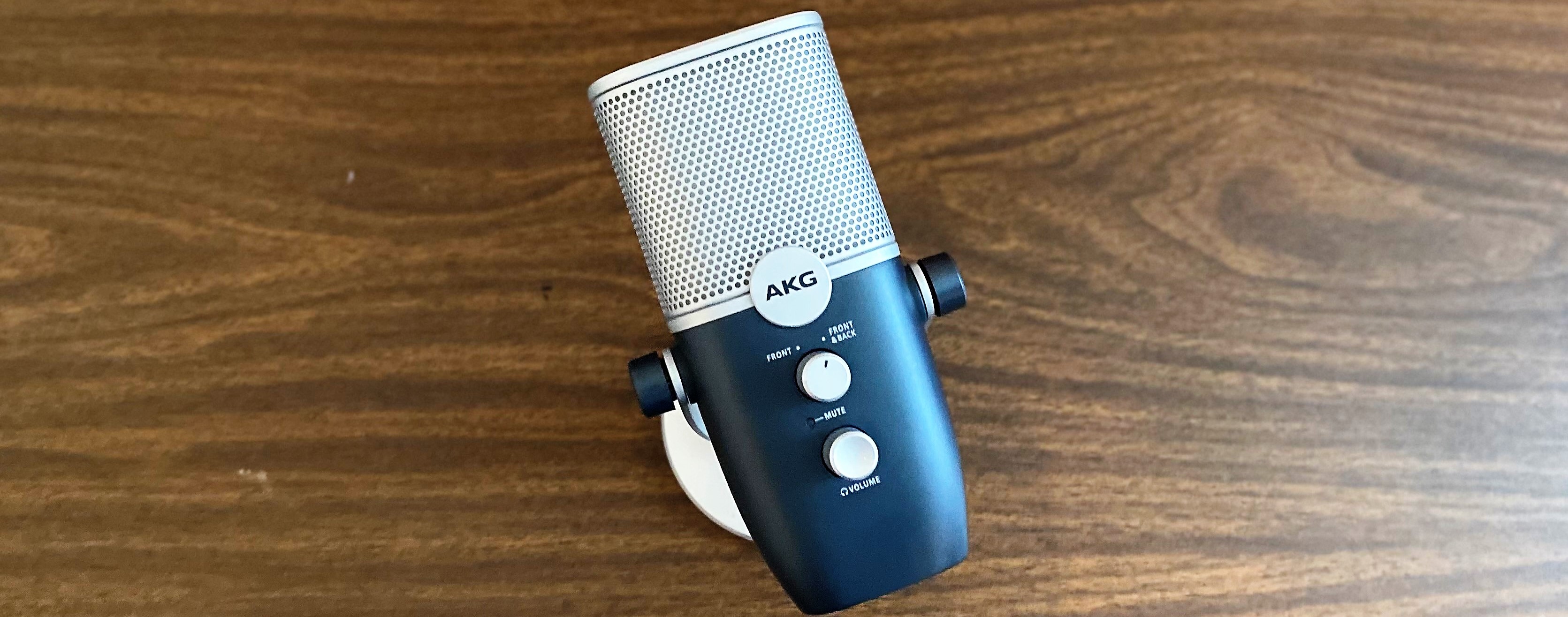Tom's Guide Verdict
Mic doesn’t quite live up to kingly billing
Pros
- +
Nice design
- +
Plug-and-play
- +
Compatible with Android and iOS
Cons
- -
Mic cover could be stronger
- -
Lacks directional options
Why you can trust Tom's Guide
Price: $99
Connection: USB
Ports: USB
Condensers: Cardioid
Directional patterns: Selectable; front (cardioid), front and back (omnidirectional)
Size: 7.2 x 4.5 x 8.7 (inches)
Weight: 1.47 pounds (with mount)
A nearly 20-year career as a journalist teaches you to study details. When I received the AKG Ara USB microphone, it was the name that got my attention. As it turned out, “Ara” has Arabic origins and means “king.” I wish the mic lived up to the billing. It’s not a bad microphone — it’s just that, when compared to its brand counterpart, the AKG Lyra, it defers, not dominates.
The good news is that the Ara is a plug-and-play mic, which makes set-up incredibly easy. The bad news? It has basic mic pick-up options and controls.
AKG Ara review: Price & availability
The AKG Ara USB microphone has a $99 price tag on the AKG website, but we have seen it drop down to $69 with some online retailers, including Sweetwater, and B&H Photo.

AKG Ara review: Design
The Ara is a gorgeous mic to look at, and functionally it has a pretty simplistic design. It comes with a mic stand and has modest details with the brand name. A pair of screws keeps the mic and stand in place, and one can remove the stand to allow for versatile mounting options. Like the Lyra, an additional ⅜ adapter is included to attach the Ara to “industry-standard” mic stands, and the bottom of the mic contains a 3.5mm stereo headphone jack and a USB port for easy plug-and-play operation. The USB port in question is accompanied by a USB-C-to-USB-A cable.
Again, the Ara is functionally simple — for better or for worse. I say the latter, simply because when it comes to podcasting and/or recording, diverse directional options not only suggest versatility, but quality. I’ll explain more in the sound quality section (below). In terms of design, there are two buttons on the front of the mic. The top button allows the user to toggle between front (cardioid) and front/back (omnidirectional). The bottom button controls the volume, and could use an indicator button to denote the headphone volume. The cover that protects the mic array seems vulnerable to wear and tear.

AKG Ara review: Sound quality
With only two options at my disposal, I got right to work toggling between the cardioid and omnidirectional modes. The cardioid mode was more than serviceable, and picked up my voice with clarity. For what it’s worth, I recorded via Garageband on my MacBook Air. Regardless of which OS you’re using, the system requirements for the mic are listed on the quick start guide, along with a web address to find the latest Ara firmware.
The omnidirectional mode was less than promising. This is where distinction and quality come into play. If you’re going to use the “front and back” feature for an interview, I would highly recommend using a pop filter and having as little background noise as possible. Otherwise, there will be a lot of work to do in post-production editing.
Get instant access to breaking news, the hottest reviews, great deals and helpful tips.
Again, I don’t think the Ara is a bad mic. It’s just limited when compared to the Lyra, and certainly against standard bearers such as the Blue Yeti.
AKG Ara review: Verdict
The AKG Ara is a serviceable backup mic to use in a pinch, and has potential for first-time users who want to keep things really simple as they navigate the world of recording. For an extra $50, though, users can enjoy a world of difference with the AKG Lyra, or go for Blue Yeti that priced at slightly less. The AKG Ara may have been given a mighty name that means king, but it’s not the ruler in the world of USB microphones.
Ken J. Makin is a tech and entertainment writer for Tom’s Guide, and has nearly 20 years of experience as a journalist. He’s an avid podcaster and freelancer for various sites, including ESPN’s The Undefeated and The Christian Science Monitor. When he’s not podding or writing, Ken is likely spending time with his wife and children.


